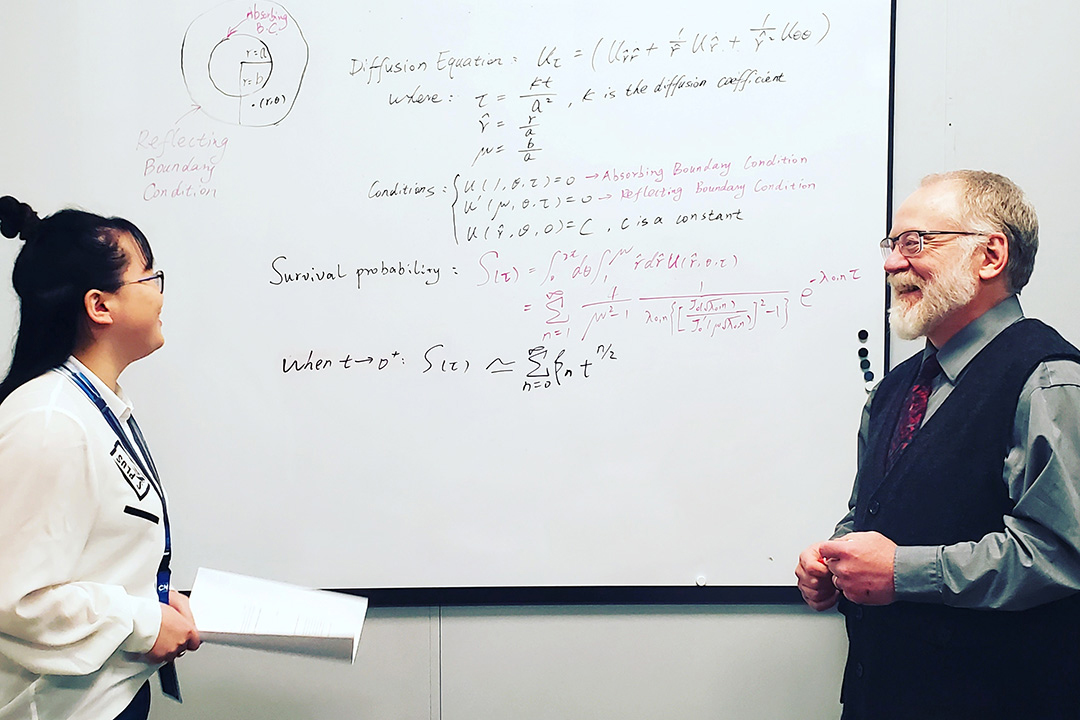
SENS specialist seeks food solutions the world needs
For University of Saskatchewan (USask) computational biologist Dave Schneider, plant health ultimately comes down to an issue of food and economic security.
By Megan Evans“There is no computer algorithm that is going to feed the world,” Schneider emphasizes. “Only by people working together in teams can we solve these incredibly complex problems.”
Schneider, a professor in USask’s School of Environment and Sustainability (SENS) and the Global Institute for Food Security Research Chair in Digital and Computational Agriculture, is one of a growing number of researchers on campus dedicated to searching for solutions to providing food security for an ever-expanding global population, as a new year and decade begins.
The United Nations General Assembly has declared 2020 the International Year of Plant Health, with the purpose of raising global awareness on how protecting plant health has broad implications for ending hunger, reducing poverty, and protecting the environment, as well as economic development.
As Schneider sees it, plant health optimization in agriculture is critical for food security. As the human population increases, so does the need for food production. Without plants that are resilient to ever-changing environmental factors, Schneider said we can expect to see crops, and the farming operations that produce them, fail.
The stakes are high, but answering smaller questions related to plant health one at a time allows for the creation of a bigger picture and, ultimately, a vision for a sustainable future. Climate change means changes in temperature and temperature extremes, drought, pathogens, and new pests, among other threats. These evolving conditions force plants to adapt. But when plants fail to adapt quickly enough, crops fail—ultimately putting the global food supply and economic livelihoods at risk.
“Plants can’t run away, so how do they respond to these threats? Answering this question is fundamental to building a sustainable agro ecosystem for the future,” Schneider said. “We need to develop quickly adaptive plants to handle rapidly changing environments.”
Answering the question of plant responses to biological threats is not a simple process. While biology used to be a data-poor science, technological advancements mean the days of measuring plants and roots with yard sticks is long gone. Interdisciplinary work (in this case the interface between biology, engineering and mathematics) is required to tackle challenges such as developing plants that can adapt quickly to environmental factors.
In his research, Schneider writes his own computer software to translate huge quantities of biological and genomic data into useful insight.
Like the plant adaptations he studies, Schneider’s area of expertise evolved out of necessity.
“I couldn’t get a job as a chemist when I left grad school, and so I took a job at IBM as a computer scientist,” he said. “Working in the space between biology and computer science is my specialty. Just as we see the border between the prairie and the forest is rich in species diversity, the interdisciplinary space is rich in intellectual diversity. The problems that exist in this space are the most interesting ones to solve.”
The problems, as they relate to plant health, are complex. However, some simple solutions, according to Schneider, may be found by crunching the numbers and delving into the data.
“We have to look at issues, like a crop that is high yielding versus something with a smaller yield but that is drought-tolerant, for example,” he said. “What properties does the drought-tolerant plant have that the drought-intolerant plant does not, and can we get the drought-intolerant plant to express drought-tolerant traits? I look at this problem using mathematical and computational science tools.”

